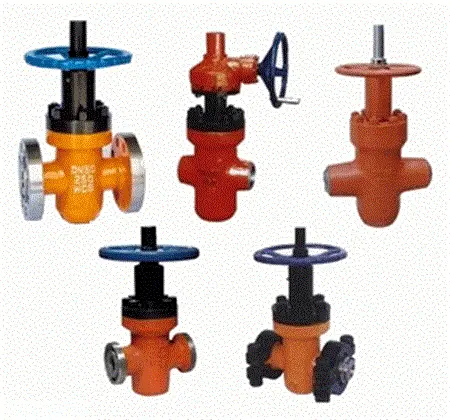Petrochemical industry refers to the modern industry which produces petroleum products including gasoline, kerosene, diesel, lubricant and liquefied petroleum gas by using petroleum and natural gas as raw materials and alkene and arene through utilizing the light oil as the raw material so as to produce products such as synthetic resin, synthetic fibre, synthetic rubber and all kinds of chemical materials.
Valves
Valves for petrochemical industry is the most widely used equipment in petrochemical production, and all kinds of gases and liquid media in petrochemical production will pass through various valves, then be blocked or delivered to all kinds of vessels and process facilities in accordance with the production process. Frequently used valves in petrochemical production are the general valve and the special valve. The general valve includes the gate valve, the globe valve, the ball valve, the
check valve, the butterfly valve, the reducing valve, the safety valve and the control valve. The special valve includes the slide valve and the high temperature butterfly valve in the catalytic cracking unit, the four-way switching valve in the delayed coking unit, the cryogenic valve in the ethylene cracking unit, the high temperature and high pressure angle globe valve and the throttle valve in the synthetic ammonia unit.
General valves in petrochemical industry
The maximum operating temperature of general valves in petrochemical industry can be up to 570℃; the minimum temperature can be -196℃; the maximum pressure can be 600Mpa; the maximum diameter can be 5350mm. General
valves in petrochemical industry can meet most of the needs of petrochemical production.
With the development of the petrochemical industry and the progress of the technology, the demand for general
valves with the high parameter is increasing, these valves including high temperature valves whose operating temperature can be from 500℃ to 900℃, cryogenic valves whose operating temperature can be from -190℃to -40℃ and high pressure valves whose working pressure can be from 200Mpa to 500Mpa. There are more higher and stricter requirements for the safety, reliability of functions and service lives of valves, especially for the
valves that are used for transporting flammable, explosive, corrosive, and toxic media.
For valve materials' selection and the manufacturing process, the most important thing is to satisfy the requirements of use, that is, to improve the safety and reliability of valves, and to be economical at the same time. There have been many new materials with high performance in recent years and the materials include all kinds of corrosion-proof titanium and zirconium materials, the nanometer materials, the organic synthetic materials, the high polymer materials, inorganic nonmetallic materials like the industrial ceramic and various composite materials. At the same time, there have been many new processes and new technologies such as casting, welding, spray welding, spraying, compounding and sintering of molding and surface treatment. All these are being applied to the valve production.
In order to adapt to the development of the information technology, the computing technology, the sensing technology, the internet, the remote control technology and the intellectual technology in the modern society are being used for valve products which are the terminal actuators of controlling the fluid's motion.
